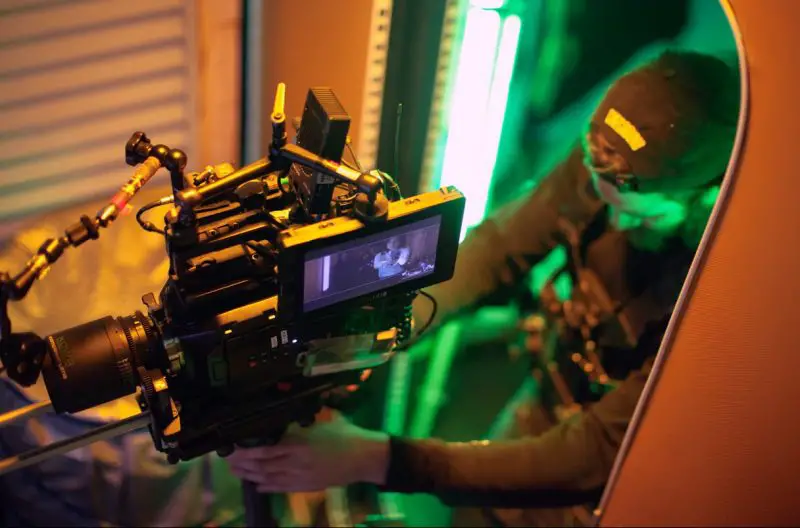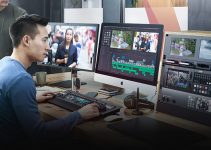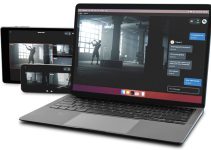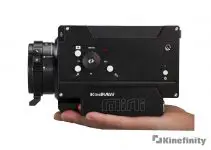From Star Wars to the new Blade Runner remake, science fiction is now seemingly more popular than ever. And, as aficionados will appreciate, it’s no longer just reserved for the big-budget Hollywood elite: indie filmmakers are increasingly boasting impressive new achievements in the genre too. So, how do you go about perfecting the art of shooting a great sci-fi, no matter your budget? DP Simran Dewan certainly has a lot to say on the topic.
Using Blackmagic’s URSA Mini 4.6K and URSA Mini Pro cameras, he recently wrapped production on upcoming interactive space-thriller Hyperlight from Nguyen Anh Nguyen, the director behind viral films The Akira Project and Temple.
First and foremost, storyboarding all cinematography was of utmost importance, especially considering a large majority of the short would take place in the restricted confines of a spaceship. Movement would play an important role throughout Simran’s work. The film – a thriller about two astronauts who quickly realise they aren’t alone on board their ship – needed fast camera work travelling across the rooms and corridors to create tension to support the script.
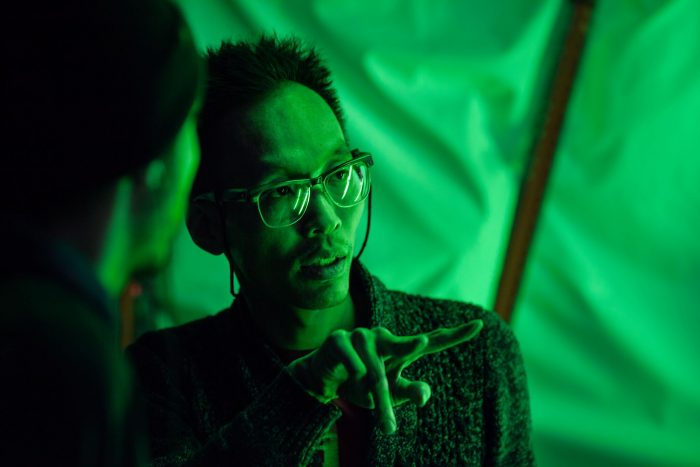
On an indie limited by time and budget, the camera would also need to frequently be moved from one setup to another on a quick release plate: the crew would often be tearing down one part of the set while already setting up the next scene.
“Our URSA Minis were mostly rigged for a Chapman Hybrid dolly and a Ronford-Baker Atlas tripod head, allowing us to get the precise movements and smooth boom ups we needed for movement throughout the ship,” begins Simran. “This was supported by the camera’s small, light ergonomics, which were very useful when we needed to shoot in tight corners, or move from one setup to another.”
Pairing the cameras with vintage Kowa Prominar anamorphic lenses for a more cinematic final result, Simran shot in 4.6K CinemaDNG Raw with a compression of 3:1 and basic Rec.709 LUT. The lighting was built directly into the set design with 11 DMG Lumière SL1 smart lights connected to a board via DMX for cueing in and out, so crew could interactively turn lights on as the actors moved throughout the ship.
“I naturally pushed to shoot RAW,” Simran continues. “You end up with a much thicker digital negative with more latitude and information for post-production, which is essential on a science-fiction thriller full of visual effects shots.”
“Using the 4.6K sensor for a 4K finish was also fantastic – I’m a firm believer that oversampling lends to a better image because of the nature of CMOS sensors and their debayering process. I’d set the URSA Mini and URSA Mini Pro to ISO 800, but metered on set to ISO 500, effectively overexposing by 2/3 stop, and knew I would end up with a very clean result. The image was nice and crisp, and the anamorphic lenses really helped give character to the final shots.”
Shooting the complex visual effects shots inherently involved in a sci-fi like Hyperlight, however, presented Simran with more of a challenge. With help from VFX supervisor Santiago Menghini and the rest of the production crew, he had to ensure issues like chroma spill were avoided, as well as use miniatures for the very first time to capture scenes outside the spacecraft.
“We knew from the start that we’d be working with a lot of green and blue screens. But our spaceship set was also built with many shiny, metallic surfaces throughout, which would be an issue when it came to avoiding chroma spill,” Simran explains. “With our budget, rear projections would have been impossible. Instead, we took advantage of our large studio. Together with our production designer, we worked to ensure we were able distance our greens and blues far enough to avoid most spill, and used DaVinci Resolve in post to fix the rest.”
For the sequences involving miniatures, Simran took advantage of the URSA Mini Pro’s internal ND filters, which allowed him to forgo the use of a matte box and get the lens much closer to the model than he would have otherwise been able to. This allowed more detail and clarity in the final image.
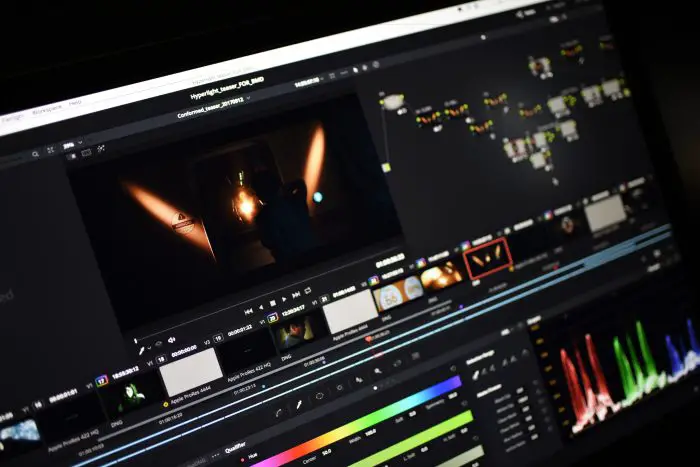
Blackmagic Design URSA Mini Pro Features
- 4.6K Super 35 CMOS sensor
- Interchangeable PL, B4, F and EF mounts
- 15 Stops of Dynamic Range
- 4.6K CinemaDNG RAW up to 60p
- Optical ND Filters
- Lightweight and perfectly balanced for handheld use
- 12G-SDI connections
- 5” fold-out Full HD Touchscreen monitor
- Ergonomic Side Grip with camera control functions
- Dual CFast 2.0 and SD Memory Card slots
- 2 x XLR inputs with Phantom Power
- $5,995 from B&H
“In theory, I knew that I had to scale down my lighting to fit the model for it to look real,” he remembers. “What I didn’t know was how much harder it becomes to shape and model a light source this small. I ended up relying on a 17” monitor to get a better sense of the contrast and shape of the lighting, and made sure I was respecting exposure values relative to the environments these miniatures would be placed in.
We did use the anamorphic lenses for some of the longer shots, but once we began filming details and close ups, I had to switch to an 18mm Zeiss Super Speed prime spherical lens in order to maintain sharpness and a deeper depth of field.”
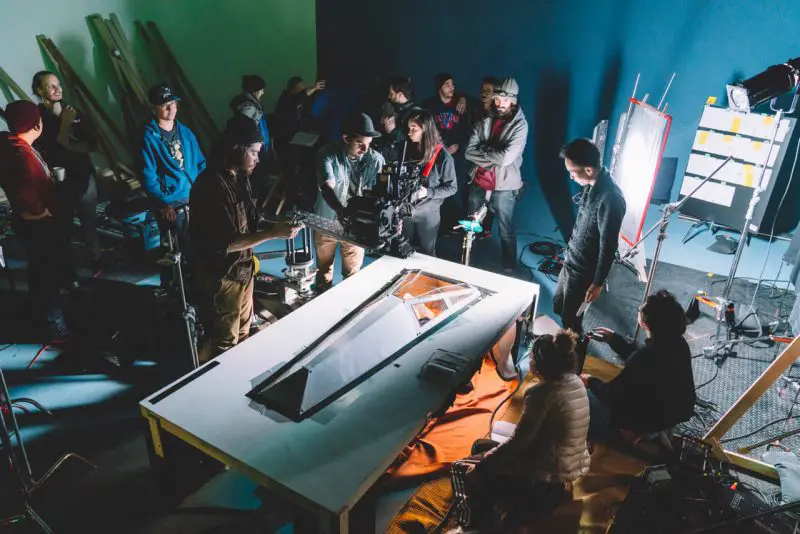
Once principle photography was complete, the rushes were synced to the audio and converted to DNxHR for offline in DaVinci Resolve Studio, which was used at every step of the post production process before delivery in 4K DCI scope (2.39:1). Take a look at the final results of Simran’s work as DP yourself and find out more on www.hyperlight.io, where Hyperlight is currently available worldwide.
Hyperlight also screened on opening night at Sci-Fi London International Film Festival yesterday on May 1st, 2018. See it on Vimeo below.
Hyperlight [4K] from Nguyen-Anh Nguyen on Vimeo.
- Director – Nguyen Anh Nguyen
- Writer – Nicolas Billon
- Producer – Nguyen-Anh Nguyen
- Line Producer – Stéfanie Jomphe
- Director of Photography – Simran Dewan
- First AC – Jeanne Dupuis
- Second AC – Benjamin Granet
- Gaffer – Roland Cody Larocque
- Key Grip – Dustan Lewis McBain
- Electric – Jason Goodall
- Best Boy – Daniel Ho-Tieng and Jaden Scholes
- Sound Designer – Théophile Porcet (Cult Nation)
- Visual Effects Supervisor – Santiago Menghini
- Post Production Supervisor – Mathieu Marano (CineGround)
- Editor – Naomi Silver-Vezina
- Colourist – Simon Boissonneaux (CineGround)
Any Sci-Fi aficionados out there? Not that it’s a prerequisite to be one, in order to appreciate a stellar short film, but as a huge Sci-fi fan, I’d say this short is absolutely outstanding and it not only shows that Nguyen and Simran possess some serious visual flare, which is imperative in sci-fi, but some serious narrative skills to boot.
As someone, who’s already shot a debut feature film on a shoe-string budget (way back in the day when the BMCC 2.5K, was the new kid on the block) and always looking for new ways to learn on how to improve my craft, I can learn quite a few things from the creative team’s perseverance and approach to visuals and story here.
Disclaimer: As an Amazon Associate partner and participant in B&H and Adorama Affiliate programmes, we earn a small comission from each purchase made through the affiliate links listed above at no additional cost to you.
Claim your copy of DAVINCI RESOLVE - SIMPLIFIED COURSE with 50% off! Get Instant Access!



